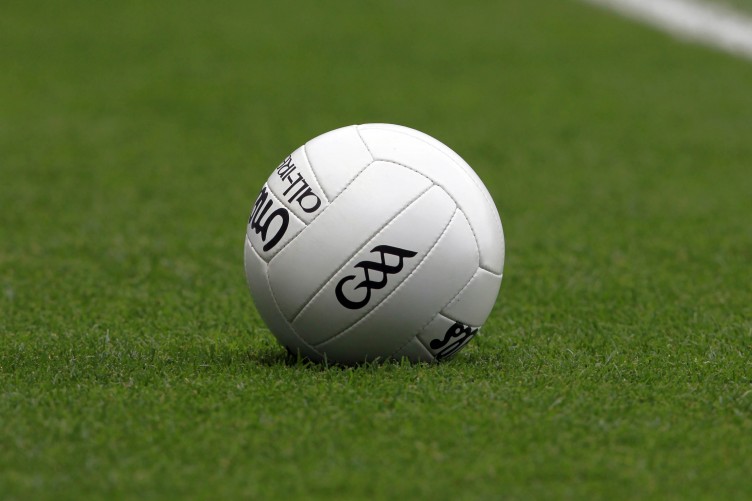Know the Game: Gaelic Football
What is Gaelic Football? Your Ultimate Guide!
Have you ever stumbled across a bunch of fellas kicking a ball out of their hands, towards a goal, with a set of rugby posts attached to it?
Chances are, it was Gaelic football - but exactly what is this historic game? Time to put you in the know!
Gaelic football is a centuries-old game
A History of Gaelic Football
Gaelic football is a traditional, native game played in Ireland, with 33 counties playing in the All-Ireland Football Championship.
Like hurling, Gaelic football has been played for centuries, but it’s still one of the most popular sports in Ireland.
The Gaelic Athletic Association (GAA) was established in 1884, but the first known reference to Gaelic football was way back in 1308.
The Game and Team Setup
Gaelic football is played with a ball similar to the size of the ball used in football games.
A team consists of 15 players in total:
A goalkeeper
Six defenders
Two midfielders
Six forwards
Like most team sports, substitutes can be brought on at any stage during the game, which is 70 minutes in duration. The maximum number of substitutes permitted is six per team per game.
The Gaelic Football Pitch
Gaelic football games are played on a larger pitch than football or rugby. The total length of the pitch is 145 metres and 90 metres wide.
The goalposts are similar to rugby, however, the crossbar is lower in Gaelic football.
The layout of a Gaelic football pitch. Image credits: Tacoma Hounds
The layout of a Gaelic football pitch is a lot different from any other sport. Parallel lines are marked at 13m, 20m, 45m and 60m. The middle of the pitch is marked with parallel lines, too.
Gaelic Football Rules
Gaelic football games at the inter-county level are made up of two halves consisting of 35 minutes each, 70 minutes in total. However, club games are 30 minutes each half or 60 minutes in total.
Gaelic football players are allowed to run with the ball in their hands, and the ball can also be kicked or hand-passed.
However, a player can only take four steps with the ball. After that, they must “solo” or bounce the ball.
What is a Solo?
A solo involves dropping the ball onto your foot or boot and kicking it back into your hand. You can’t bounce the ball twice in succession, however, you can solo the ball as many times as you wish.
You can’t pick the ball up straight off the ground, a player must put their boot under the ball in order to pick it up.
Is Gaelic Football a Contact Sport?
Gaelic football is a contact sport. Players are allowed to engage in shoulder-to-shoulder contact. The ball can also be removed from the other player by grasping an opponent’s hand.
There are no set rules in terms of the number of people who can tackle the player with the ball, but the tackle must be aimed at the ball.
In terms of foul play, punching, tripping, pulling a jersey and full frontal charge are forbidden. These can warrant a yellow card, which acts as a warning to the player.
Scoring in Gaelic Football
A goal is scored if the ball crosses the line underneath the crossbar and a point is scored when the ball goes over the crossbar.
In Gaelic football, a goal is worth three points, while a point is worth one point.
Croke Park - the setting for the All-Ireland Final. Image credits: Trip Savvy
For example, 2-10 is two goals and 10 points scored. In total, it’s 16 points when you add it together.
The umpire uses a green flag to mark a goal, while a white flag marks a point. When a goal or point is scored, the goalkeeper kicks the ball back out from the 13m line.
Officials
A referee, two linesmen, four umpires and a fourth official are all part of Gaelic football match days. Games also make use of Hawk Eye.
Hawk Eye is computer-rendered ball tracking similar to goal-line technology in football, which can determine whether a point attempt was successful or not.
If the point was successful it will come up “Yes” on the big screen in the stadium, if it wasn’t, it comes up “No.” Simple as that.
The Format of Gaelic Football
The championship is broken down into four provinces: Leinster, Munster, Ulster and Connacht. The teams in each province battle to win the province trophy, before they compete in the All-Ireland Championship.
When a county loses a game in their province, they go into the All-Ireland qualifiers, where they play more games to progress through the All-Ireland Championship.
The provincial winners progress to the All-Ireland quarter-finals and so on and so forth.
Discipline in Gaelic Football
Gaelic football uses red and yellow cards. However, this game also has a black card, brought in by the GAA to stop cynical fouling.
Cynical fouling includes dragging another player to the ground and body checking – not shoulder-to-shoulder challenges or third-man tackles.
What Happens When a Player Gets a Black Card in Gaelic Football?
A player who receives a black card is ordered to play no further part in the game and is essentially sent off.
However, that player can be replaced by another player, provided the team in question hasn’t used all six substitutes already.
All-Ireland Final Day
The All-Ireland Final is the showpiece of the Gaelic Games in Ireland. Both finalists contest to win the Sam Maguire Cup.
The game is played at Ireland’s biggest stadium, Croke Park, which is situated in Dublin. The capacity of the stadium is approximately 82,500 - and every seat gets filled!


